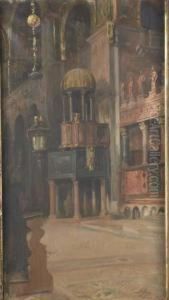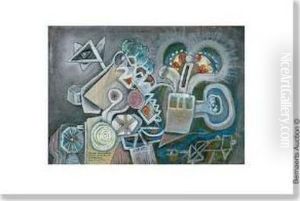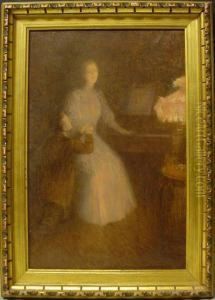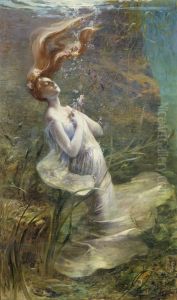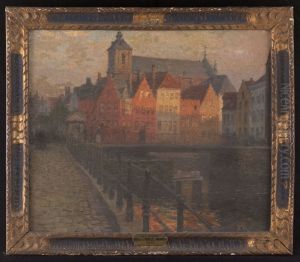Paul Steck Paintings
Paul Steck was a French sculptor and medallist born in 1866 in Sarreguemines, a town that was then part of the French Empire and is now located in the Lorraine region of France. Steck studied at the École des Beaux-Arts in Paris under the tutelage of renowned sculptor Alexandre Falguière. He was a contemporary of artists such as Auguste Rodin and was active during a period known for the flourishing of the Beaux-Arts architectural style and academic art.
Steck's work is characterized by its classical style, often inspired by mythological themes and historical subjects. He was known for his ability to capture the human form with a sense of dynamism and grace. His sculptures often featured intricate details and a refined finish, qualities that were highly appreciated during his time.
Throughout his career, Steck exhibited his works at the Salon, the official art exhibition of the Académie des Beaux-Arts in Paris. His sculptures earned him recognition and accolades, including medals at the Salon and the Exposition Universelle, international exhibitions held in Paris. These successes established him as a respected figure in the French art world.
In addition to full-scale sculptures, Paul Steck also designed and created medals, which were an important art form in France at the turn of the 20th century. These medals often commemorated events or honored notable individuals, and Steck's contributions to this medium further demonstrate his versatility and skill as an artist.
Despite his achievements, Paul Steck is not as widely known today as some of his contemporaries. The shift in artistic tastes towards modernism in the early 20th century, coupled with the devastating impact of World War I, overshadowed the works of many traditional sculptors of the late 19th and early 20th centuries. Steck's adherence to classical aesthetics meant that his work did not align with the avant-garde movements that gained momentum during his lifetime and continued to dominate the art world after his death.
Paul Steck passed away in 1924, leaving behind a body of work that, while perhaps not as celebrated in the current era, represents the skill and artistic values of his time. His sculptures can still be viewed in museums and public spaces, serving as a testament to his contribution to the art of sculpture during the Belle Époque era.
